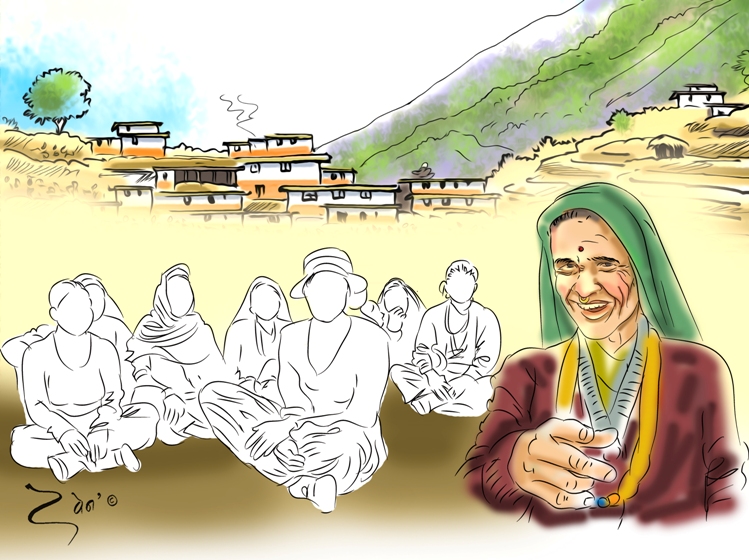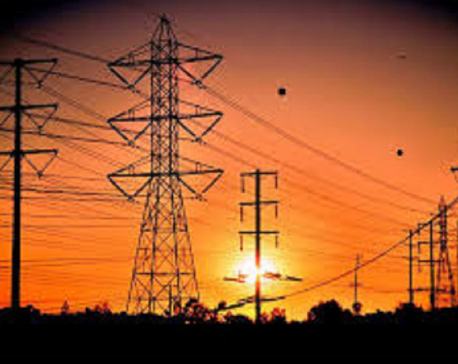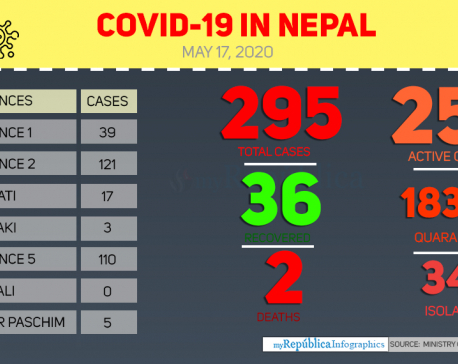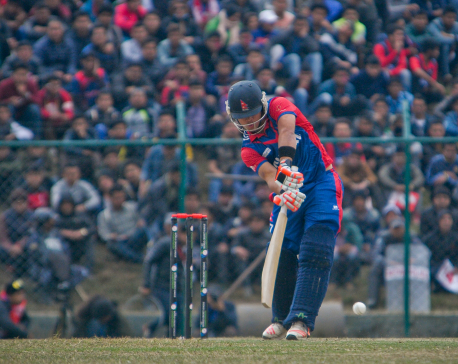
OR
#Opinion

More from Author
A few months ago, I visited Mugu and Jumla in the Karnali province. During my final site visit, I met with men and women farmers in a remote community with whom we had been partnering. Simple changes had significantly increased their farm production and their income. Sitting in a circle, they told me what they had learned. I asked if they had any advice for me, struggling with my own small vegetable garden. An older woman gave me impressively thorough advice starting with the importance of owning my own land, to how far apart I need to plant the seeds, and the benefits of various types of fertilizer.
The day before we had met with members of a different, but equally remote, community. There, homes and crops had been damaged or destroyed by floods. Visiting their modest but beautiful homes, I heard how food vouchers had helped them through a difficult winter. When an older woman started crying during our conversation, we were told that, as a single woman with no family, this was the only support she had received and had helped her survive. They showed me the irrigation canals they had built so water wouldn’t seep through the ground and destroy their homes, while diverting the badly needed water to their crops. And the retaining walls so the houses in the way of the streams wouldn’t be destroyed with the next heavy rain.
These mountain communities are among the most remote in Nepal. Their inhabitants are some of the most disadvantaged and disempowered populations from the most marginalized communities. And they have become increasingly vulnerable to the impacts of inequitable growth, social and cultural stigma, and now climate change. They are not the majority of the Nepali population. But they represent a substantial number of people around the world who have been left behind, and who are disproportionately carrying the weight of poverty, natural and man-made disasters, and food insecurity.
For decades we have talked about development, and about inclusive growth. We have talked about capacity building and about sustainability. We have talked about empowerment and about equity. Many people in many countries have fought to reclaim the dignity and the power they were born with, but have been unable to exert due to the accident of their gender, race, ethnicity, caste, religion, sexual orientation, or where and into which community they were born.
Recently, I signed a new five-year, $659 million partnership agreement with the Government of Nepal on behalf of my government and my organization, the United States agency for International Development or USAID. The Agreement focuses on continued support in the areas of health, education, environment and natural resource management, disaster risk mitigation, economic growth, civil society and governance. That’s the ‘what’. The ‘how’ is even more important. The core of this Agreement is our support to federalism, our focus on resilience, and our commitment to inclusion. Through this Agreement we have committed to be innovative and flexible in our approach, to understand and to leverage local systems, and to balance the priorities, strengths and goals of the communities with whom we work and to ensure they are in the lead. We have also committed to seek ways to overcome historic systemic discrimination and exclusion of marginalized groups, to make sure that all the citizens of Nepal can participate, and that people are no longer left behind.
It’s our drive and our duty as human beings and as members of our world community to support each other when in need, and to help each other meet our full potential.
Last month, at the Nepali government’s request, my government began delivering pediatric Pfizer vaccines to help Nepali children remain safe and healthy. Working together with the Government of Nepal and our development partners, we have been able to provide near universal Covid-19 vaccine coverage to the Nepali people, including its children and even its refugee communities. This is what true inclusion looks like. A population of a country, regardless of gender, age, race, caste, ethnicity, or in which community they live, including the most remote, receiving the services they need, in a fair, equitable and dignified manner. Equity, inclusion, dignity is a vision we can strive for, because it is possible.
The United States government is committed to making Diversity, Equity, Inclusion, and Accessibility priorities for our work to allow everyone an opportunity to thrive. To end, I would like to echo our USAID Administrator Samantha Power - “Each of us has a responsibility to address bigotry, gender discrimination, and structural racism and to uphold individual dignity. This isn’t just one of our values; it’s our mission—one hand extended out to another to meet people where they are and treat others as equals.”
You May Like This

Boost investment in power transmission infrastructures
As Nepal strives to achieve uninterrupted power supply for all its citizens and capitalize on surplus electricity through exports, urgent... Read More...

Health ministry confirms three new COVID-19 cases, number of total cases reaches 295
KATHMANDU, May 17: Nepal reported three new cases of COVID-19 on Sunday evening, taking the national tally to 295. ... Read More...

Nepal vs Kenya: Five crucial things Nepal looks for second match
KATHMANDU, March 12: Nepal is taking on Kenya on Monday in the second match of the ICC World Cricket League... Read More...







Just In
- NRB to provide collateral-free loans to foreign employment seekers
- NEB to publish Grade 12 results next week
- Body handover begins; Relatives remain dissatisfied with insurance, compensation amount
- NC defers its plan to join Koshi govt
- NRB to review microfinance loan interest rate
- 134 dead in floods and landslides since onset of monsoon this year
- Mahakali Irrigation Project sees only 22 percent physical progress in 18 years
- Singapore now holds world's most powerful passport; Nepal stays at 98th












Leave A Comment